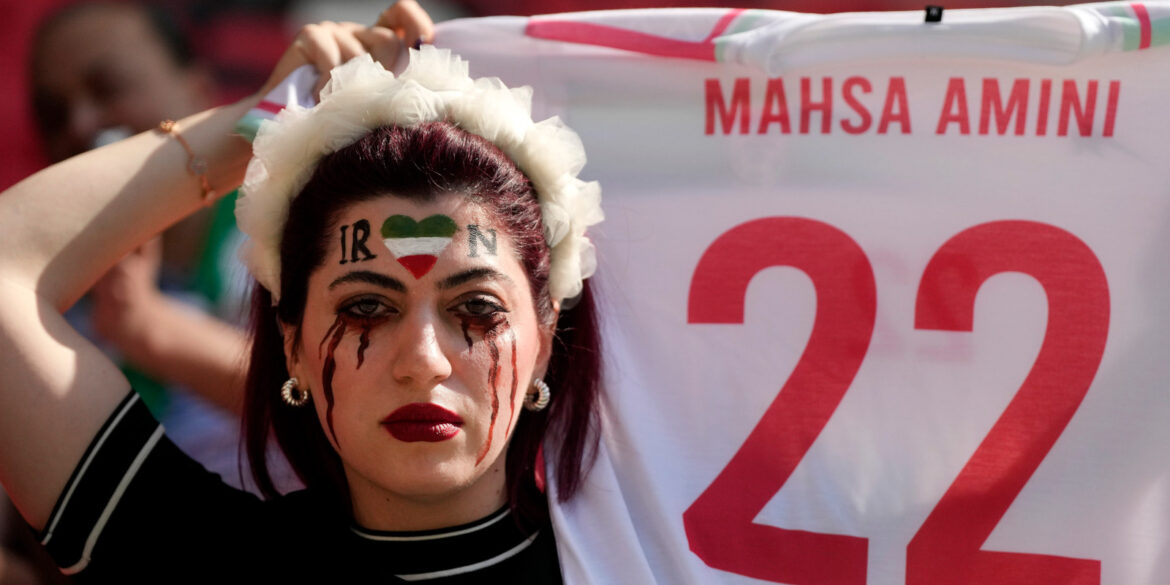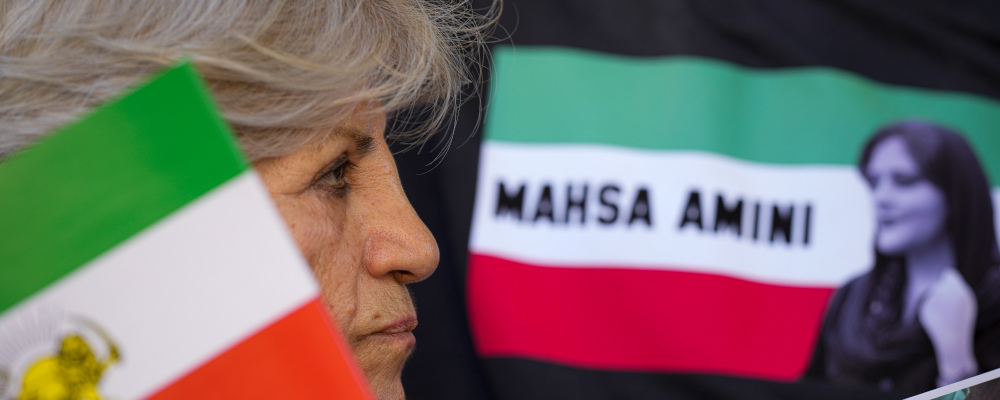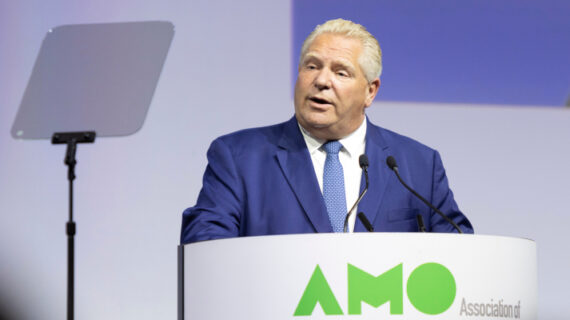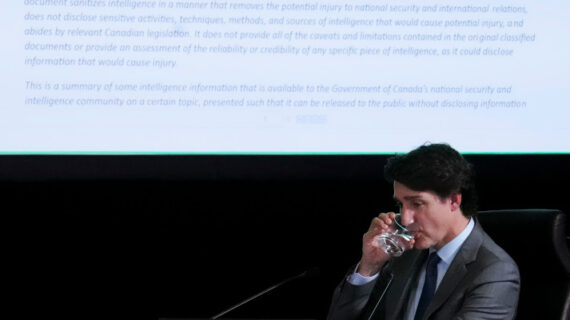The first anniversary of the murder of Mahsa Amini is here. A year ago on September 15, Mahsa was arrested by the morality police for wearing her hijab improperly, and then savagely beaten. She died in hospital shortly thereafter, and the Iranian public reacted furiously. Some observers claimed to foresee the imminent end of the Islamic Republic and have been speaking of a second Iranian revolution ever since. Others were and remain more circumspect, noting that the regime has faced down protests and revolts before and may do so again. A year later, the Islamic Republic still stands and is showing no signs of collapsing.
The Islamic Republic’s refusal to collapse seems to vitiate the late 20th-century “End of History” expectation that all countries would soon adopt a politics of personal freedom and secularism. In the heady days of the 1990s, amidst the collapse of the Soviet Union and the liberation of Eastern Europe, it was easy to believe that the development of liberal democracy was inevitable everywhere. This belief is asserted somewhat less now in the aftermath of the War on Terror and the failure of regime change to usher in liberal democracy in Iraq and Afghanistan. Similarly, the liberal-minded Arab Spring movements of the 2010s fizzled out, to the benefit of Islamists and strongmen.
And yet, the theory of inevitable liberal democracy still has considerable inertia to it. It resurfaces with every new wave of mass protest within Iran. There is good reason for this. The rule of clerics is extremely unpopular—more so than ever before after the murder of Mahsa Amini and the ensuing protests in late 2022. A recent survey conducted by The Group for Analyzing and Measuring Attitudes in Iran (GAMAAN) posed the simple question “Islamic Republic: yes or no?”, and the result was that 81 percent responded “no”, a mere 15 percent said “yes”, and only 4 percent were unsure.

Overwhelming dissatisfaction with the Islamic Republic suggests that the regime should not be long for this world. The problem is that there is no consensus as to what should replace the rule of clerics. The recent GAMAAN survey reflects this lack of internal consensus, revealing a significant difference between Iranians in the homeland and those abroad. According to GAMAAN, 28 percent of the population within Iran and 32 percent outside Iran would prefer a presidential republic, 12 percent inside Iran and 29 percent outside Iran would prefer a parliamentary republic regime type, and 22 percent inside Iran and 25 percent outside Iran would prefer a constitutional monarchy. An overwhelming 85 percent of respondents supported the idea of an interim “solidarity council”—a coalition of all parties and factions opposed to the Islamic Republic. This body would be expected to run a provisional government while a new constitution was voted on and implemented. But there is no agreement as to who should participate in the solidarity council, nor whether it should consist of homeland Iranians alone or also include those abroad.
And so dissidents still have a significant amount of work to do when it comes to offering a single, viable alternative to the Islamic Republic. But to judge by Iranian attitudes abroad, it makes sense to infer that a sizeable portion of that 81 percent would favour some form of liberalism. Moreover, liberalism would be the most obvious method of bringing together seemingly antithetical factions or political movements within a common project of replacing the Islamic Republic.
So it is worth asking why liberal democracy has not yet taken hold within Iran. The answer, as with so many other elements of Iranian politics, is both disappointing and paradoxical.
The first problem is that the Western theory of a secular, liberal Iran arising from the ashes of the Islamic Republic is framed incorrectly. The theory goes like this: a large cohort of young, Western-friendly Iranians will come to reject political Shiism, will demand regime change, and liberal democracy will be the result. The theory resurfaces with every new wave of protest within Iran.
Take the Green Movement of 2009, for instance. This movement was fairly portrayed in the West as objecting to human rights abuses on liberal democratic grounds and aiming at the removal of conservative president Mahmoud Ahmadinejad after a fraudulent election. Some observers also suggested that these protests were the largest seen in Iran since the Revolution of 1979, or at least since the student demonstrations of 1999. But the Green Movement failed: it began peacefully, grew increasingly violent, and then petered out by 2011. Though the Green Movement was indeed large and popular, counter-protesters favouring Ahmadinejad and the status quo were unfortunately more numerous.
What would have happened if the Green Movement had succeeded? Here Western observers would have been disappointed since the liberal expectation would not have come to pass. The leaders of the Green Movement, Mir Hossein Moussavi, Mehdi Karoubi, and Grand Ayatollah Hossein-Ali Montazeri, were reformers rather than revolutionaries. In fact, two of them were clerics in the mould of the reform-minded but ultimately unsuccessful president Mohammad Khatami (in office 1997–2005). A victorious Green movement might have achieved some constitutional tinkering, as was attempted by Khatami, but there would have been no radical shift towards Western-style liberalism, nor a repudiation of political Shiism.
But, at a deeper level, the theory of an inevitable youth-led uprising against the Islamic Republic is untenable. In 2009, the idea may have seemed plausible, since the cohort of 20- to 25-year-olds was the largest generation at that time. It is wrong to imply that everyone in a given generation must hold the same political opinions; but even if they did, the generation of the Green Movement has now aged out of revolutionary fervour, just as American Baby Boomers did in the late 1970s and early 80s. The present cohort of 15- to 30-year-old Iranians is now the smallest portion of Iranian society. And so, any liberal consensus among them, if it exists, will count for very little. So if Iranian youth were destined to bring about a liberal Iran, the moment for it would seem to have passed.
It is long gone in another sense, too. In the late 18th century, Iranian elites of all sorts, even the Shia clergy, had come to view the unconstrained power of the Qajar monarchy with suspicion. Such was the context in which political liberalism began to be imported into Iran. Its main exponents were Mirza Fath Ali Akhundzade (1812–1878), Mirza Malkum Khan (1833–1908), and Mirza Abdul-Rahim Talibov (1834–1911) who all saw liberalism as a useful tool in reigning in despotism.
Iranian liberalism reached maturity within the work of Mirza Mohammad Hussein Naini (1860–1936), a Shiite cleric who proposed a synthesis of Islam and liberalism. Until the final Shiite Imam should return to rule the world, Naini argued, human government must necessarily be imperfect. The choice of regime therefore was one between the bad and the worse. The worst possible outcome was despotism aided by clerics since a tyrannical clergy would be the ruin of both popular sovereignty and Islam itself. In Naini’s view, a parliament would have the legitimacy that the Qajar despotism lacked, and he argued in favour of liberty of expression as a God-given defence against tyranny. He also embraced equality of all persons regardless of religion, the separation of powers, and the accountability of the monarch.
Naini’s arguments led to broad popular support for a constitutional government which nobles, moderates, liberals, and the king all endorsed in 1906. There was some further tinkering in 1907 also. The new constitution bore the stamp of liberalism, establishing a bicameral government with a responsible cabinet. The lower house was to be elected by broad, but not universal, male suffrage, and the upper chamber was partly elected by popular suffrage and partly appointed by the monarch. The lower house had veto power over new laws and budgets. New laws could be rejected by a religious council, but the laws themselves did not need to conform with the Quran. Despite imperfect implementation, this constitution held good right up to 1979, and the constitution of the Islamic Republic also adopted the basic shape of this synthesis of liberalism and Islam. The Ayatollah Khomeini built upon Naini’s foundation. And the same liberal discourse against tyranny that had been aimed at the Qajar monarchy was directed against the Pahlavi dynasty.
The present Iranian constitution maintains its liberal stamp. Its most obviously liberal feature is that it places the Islamic Republic of Iran above the Shariah, the traditional Islamic law. In other words, the constitution is the foundation of the Iranian state, not Islam. This arrangement survived constitutional tinkering in 1989 when the late Ayatollah Khomeini publicly reproved future supreme leader Ali Khamenei for suggesting that the Shariah should rather be the basis of the Iranian state. Accordingly, to this day, Iranian citizenship is not derived from Islam, and a Muslim foreigner has the same legal status as a foreigner belonging to any other religion.

Khomeini’s constitution furthermore proclaims the very un-Islamic notion of the full equality between men and women. Zoroastrians, Jews, and Christians are recognised as religious minorities and the constitution requires the Muslim majority to respect them. It asserts the “exalted dignity and value” of all people, as well as their “freedom coupled with responsibility before God.” It announces the “end to all forms of undesirable discrimination” and the elimination of imperialism, despotism, and autocracy. It guarantees individual rights, such as those to dignity, life, and property. Finally, the constitution assures both freedom of expression and freedom of conscience, protecting individuals from molestation simply for holding a belief.
None of those liberties is absolute. Each is limited by “the fundamental principles of Islam,” and in many cases also by the “rights of the public.” In other words, the constitution is largely circumscribed by Iranian culture and religion, and here we find the principal distinction between the liberal-Islamic synthesis and its Western counterparts. Even the supposedly absolute rights of the American constitution are in practice circumscribed by cultural norms, as are the liberal constitutions of Europe and the realms of the British Commonwealth. But cultural norms tend not to be enshrined in constitutions, nor is a vestigial Christianity normally invoked as the origin of liberal morality, even though that is indeed its source. There is a paradox here. When a constitution specifically invokes culture and religion, it is not considered to be liberal, an instructive example being the Hungarian constitution which, though guaranteeing liberal freedoms, including that of liberty of expression, nevertheless requires “every organ of the state” to protect the “Christian culture” of Hungary. This constitution is reflexively called “illiberal” by its critics and “post-liberal” by its supporters.
However European illiberalism or post-liberalism may be analysed, the Iranian constitution presents a far more complex problem. A defender of the Hungarian constitution would say that the protection of “Christian culture” simply redirects contemporary liberalism back to its Christian origins. But no parallel argument would work for Iran. The Islamic nature of the Islamic Republic of Iran has been shaped by liberalism; yet the liberal influence upon the constitution is held to be circumscribed by Islam. This paradox could be written off as yet another of the many internal contradictions and tensions within the Islamic Republic that make it so unstable and so difficult for outsiders to understand. But it is also proof that liberalism has already influenced Iranian political Islam and that that influence has been profound.
So perhaps the right questions to ask are why the liberal-Islamic synthesis turned out in practice to be more Islamic than liberal, and why did the liberal influence of Naini fail to guard against tyranny?
There answer to those questions is that the amalgam of liberalism and Islam creates ambiguity within Iran’s political structure, and favours institutions which act outside that structure and the constitution. Clerical courts, Islamic foundations, and the higher clergy all exert enormous external influence upon a political system that is unable to constrain their power. And this problem is at its worst in the case of the Islamic Revolutionary Guard (IRGC), a paramilitary group with a mission to safeguard the revolution. Until the IRGC is no more, or joins forces with the opposition, the Islamic Republic of Iran will neither evolve nor collapse. And there is a real danger that the IRGC could lead Iran down the road of military despotism as the Islamic Republic loses public support.
What does all this mean for the possibility of a liberal Iran in the future? It means that any further external calls for regime change or importing liberalism are bound to fail. Iran already has its own liberal tradition and its own successful example of constraining despotism. And so, it may be more useful to speak of expanding the liberal-Islamic synthesis, so as to include more of Iran’s institutions within it, rather than abolishing it and starting over. But, however this may be, the future of Iran after the Islamic Republic must be shaped by Iranians themselves within their own tradition of culture and civilisation. On the anniversary of Mahsa Amini’s murder, let us hope and pray that they soon succeed.




